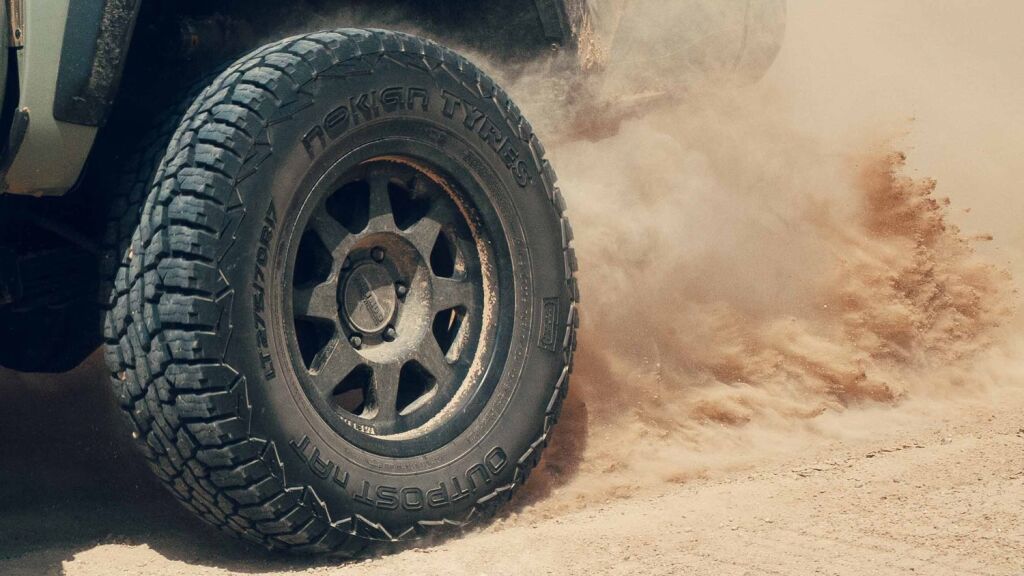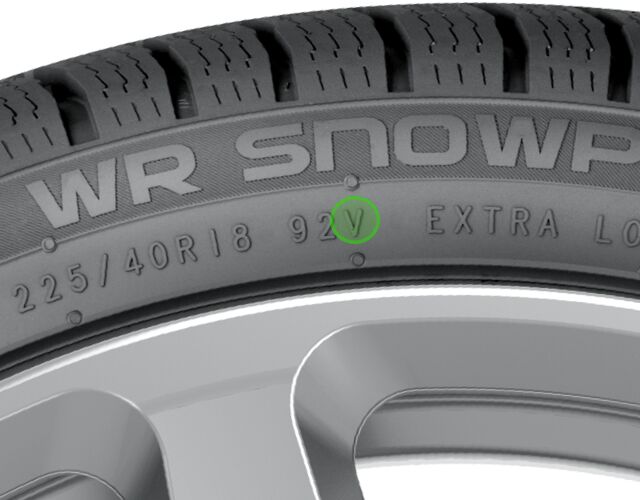
Tire size is the most important information given on the tire. However, size is not the only piece of information marked on the tire sidewall.
Tire size is the most important information given on a tire’s sidewall. The size designation is specified as a series of numbers and letters, for example, 205/55 R 16 94 V XL.
You can find this alphabet soup in your registration document, and it will tell you the type of tire that fits your car. However, registration documents often contain several tire choices, allowing the driver to choose one based on whether they value driving comfort or a sensitive steering feel, for example. Read below for information that you should take into account to find tires that are right for you.
Tire sidewall information
The tire sidewall information indicates other valuable details about your tires as well. Here’s what the different markings on a tire mean:
| 205 | is the width of the tyre in mm |
| 55 | is the aspect ratio (height to width ratio) |
| R | denotes radial construction |
| 16 | is the rim diameter in inches |
| 94 | is the load index |
| V | is the speed rating |
| XL | Extra load capacity. |
Knowing how to read the tire sidewall is a handy skill when looking for new car tires. The car manufacturer may have listed multiple recommendations for tires. You can find these in the car’s registration document. In case you find interpreting the tire’s sidewall difficult or need help choosing the right tires for your car, contact your local Nokian Tyres dealer.
Tire size
First and foremost, every car owner should make sure they know which tire size or sizes fit their vehicle. When choosing new tires for your car, ensure all four tires are the same size. Three markings are important for reading tire size in particular. These are tire width, aspect ratio and rim diameter:
- The first marking in the example indicates tire width in millimeters. Therefore, the example marking’s tire is 205 millimeters or ~8.1 inches wide. Tire width is measured from sidewall to sidewall.
- Aspect ratio is the ratio between the height and width of the tire. Unlike tire width, the aspect ratio is a percentage, so the example tire’s height is 55% of its sectional width.
- The third marking indicating tire size is the rim diameter in inches. In our example, the rim diameter is 16 inches.
Tire structure
The letter R in the example marking indicates the tire structure. If you are looking for tires for a passenger car, the marking likely contains the letter R, indicating that the tire in question is a radial tire. A radial tire is much more stable and precise than its predecessor, the bias-ply tire.
Speed rating
The speed rating indicates the maximum continuous driving speed capability of the tire. Which speed rating you should select for your vehicle depends on the make and model of your car. Using tires with a speed rating that is too low can impair driving performance, while too high speed ratings may reduce driving comfort.
The most important speed ratings are:
Q = 99 mp/h / 160 km/h
R = 106 mp/h / 170 km/h
S = 112 mp/h / 180 km/h
T = 118 mp/h / 190 km/h
H = 130 mp/h / 210 km/h
V = 149 mp/h / 240 km/h
W = 168 mp/h / 270 km/h
Y = 186 mp/h / 300 km/h
A V speed rating means the tire cannot be driven above 240 kilometres (or 149 miles) per hour. Remember that the top speed a tire can withstand is not the same as the maximum speed limit. Most likely, you will be unable to reach the highest recommended speed for a tire, for example, with a V-rated tire, without breaking the law.
You should also follow the car manufacturer's recommendation when choosing the speed rating because a lower rating may harm the car's handling characteristics, such as steering. A higher speed rating, on the other hand, will reduce driving comfort.

Load index
A tire’s load index tells how much weight a single tire can support. However, as the name suggests, this is an index, not the amount of weight in kilograms or pounds that the tire can withstand. You need to check a load index table to find the corresponding amount of weight.
In our example, the load index is 94, which means that one tire can carry a load of 670 kg or 1477 lb. For load index 91, the load per tire is 615 kg or 1356 lb. You should choose the correct load index for your car since. Otherwise, the tires will wear out quicker than usual and may become damaged while driving.
The XL marking
The last letter combination, “XL”, is not found in all tire markings. But why is that? XL means that the car is suitable for an Extra Load index tire. In our example, the load index is 94. If the index were 91, the XL marking would not be required.
Most tire models offer an Extra Load model and a normal load model. An Extra Load model can carry a heavier load, which means that even if you pack more for your summer holiday, you do not need to worry about breaking your tire due to excess load or wearing it out quicker than normal. The sturdier structure of an Extra Load tire means lower heat generation, which makes it more tolerant of wear.
The DOT code and tire age
The recommendation is to use the same tires for a maximum of six years. Your tires may age faster and wear out over time, depending on how much you drive. Over the years, the rubber compound will harden, and the tires will lose grip, even if the tires do not wear out otherwise. The four-digit DOT code marked on the tire sidewall indicates the week and year a tire was manufactured.

P stands for passenger tire
You may run into tires with the initial letter P in their sidewall. The letter P stands for P-Metric and means that the tire is a passenger tire. Tires for other vehicle types may have a different letter marked on their sidewalls, such as LT for a light truck tire or C (“Commercial”) for vans and other heavy-duty vehicles.
The number 16 stands for rim diameter in inches. What should we take into account when choosing rims?
It is important to follow the car manufacturer's instructions. For example, sportier cars will often require rim sizes of 17–19 inches, as smaller sizes will not be able to accommodate the brake systems.
Especially when fitting aftermarket rims and tires, you should choose the correct tire width for your rims. Large rims require low-profile tires, whereas smaller rims are suited for higher-profile tires. In other words, if a car requires rims of a size above 16 inches, the driver can no longer choose a higher-profile tire, even if they value driving comfort over a precise driving feel.
The registration document also offers a tire with a width and profile of 225/45. Which one should you choose?
In this option, the tire is 20 millimetres wider than in the first example and has a substantially lower profile. A wider, lower-profile tire has a better steering feel than a narrower, higher-profile tire, meaning the tire will be more sensitive to the driver's steering movements. A tire like this is suited for a driver who values quick steering response and a sporty feel.
On the other hand, a wide tire will be more sensitive to the grooves in the road, so a driver looking for more comfort may be tempted to select a narrower, higher-profile tire. A narrower tire is also safer on wet roads, as it will displace water better than a wider tire.
Always make sure that the new tires are compatible with your vehicle. If in doubt, consult the car manufacturer’s instructions or visit the closest Nokian Tyres dealer for guidance.
Please remember that it is the driver’s responsibility to ensure their tires are safe and suitable for their vehicle and to follow the vehicle’s manufacturer´s guidelines for proper use and maintenance. Consult your closest Nokian Tyres dealer or your vehicle’s manufacturer for specific advice.


